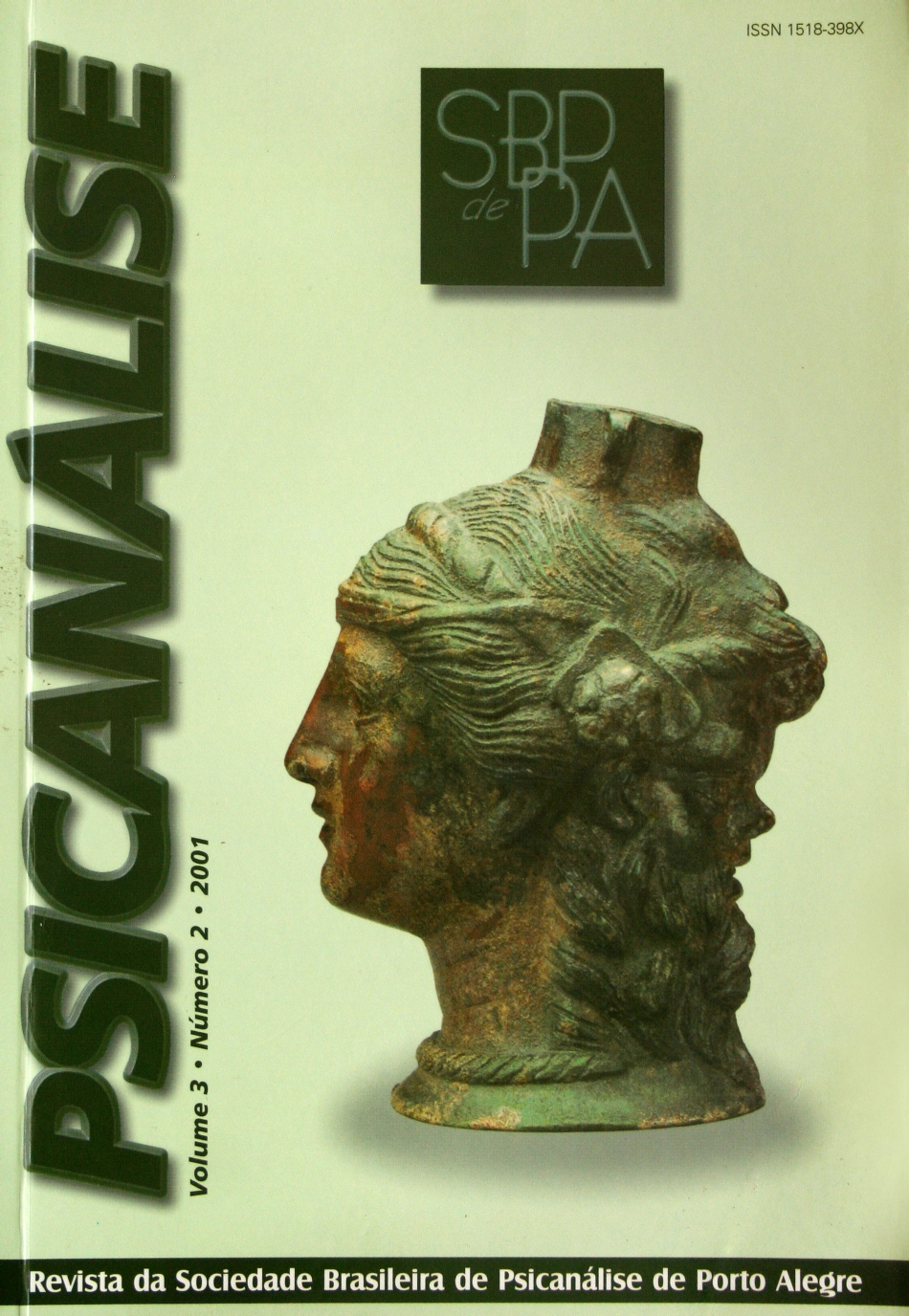O fenômeno da apresentação do objeto e suas implicações para o desenvolvimento
DOI:
https://doi.org/10.60106/rsbppa.v3i2.66Keywords:
Childhood psychosis, Global upset of development, Researches in development, Object-presentingAbstract
On the basis of her clinical experience with psychotic children who suffer from severe difficulties in tolerating the autonomous existence of the external object, the author discusses Winnicott’s concept of object-presenting, asking what the prerequisites ate for infants’ acceptance and use of the object; that is, for its otherness to be assimilated. An attempt is made to establish a connection between Winnicott’s and Klein’s ideas on this subject, and the possible importance of suchissues in normal development is indicated. Three examples of psychotic children are used to illustrate in detail several manoeuvres for avoiding the perception ofthe not-me, in the pattern of thinking that Tustin examined so well. After the clinical discussion, the author concludes that some children may be innately moresusceptible to reacting negatively to the perception of the caretaker’s otherness,and that such a characteristic combines with the environmental conditions, particularly to the style of maternal care, to produce or prevent further pathology. The rhythm, the imitative games, the gradual and partial presentation of the external object, and also certain possible methods of controlling the object, seem to belongto the set of maternal “techniques” that are used spontaneously during the interactions. This style can also be useful at times in psychoanalytical work with severely disturbed children.Downloads
References
BRAZELTON, T.B. & CRAMER, B.G. (1990). The Earliest Relationship. Parents, Infants, and the Drama of Early Attachment. Reading, MA: Addison-Wesley. [As Primeiras Relações, trans. Marcelo Cipolla. São Paulo: Martins Fontes, 1990.]
DAVIS, M. & WALLBRIDGE, D. (1981). Boundary and Space: An Introduction to the Work of D.W. Winnicott. New York: Brunnet/Mazel. [Limite e espaço, trans. Eva Nick. Rio de Janeiro: Imago, 1982.]
FONSECA, V.R. (1997). O uso da observação de bebês para o estudo da aquisição da linguagem. In Observação da Relação Mãe-Bebê. Método Esther Bick. Tendências. São Paulo: Unimarco, 1982, pp.281-91.
GROTSTEIN, J. (1981). Splitting and Projective Identification. New York: Aronson.
MELTZER, D. (1975). Adhesive identification. Contemp. Psychoanal., 2: 289-308.
OGDEN. T.H. (1985). On potencial space. Int. J. Psychoanal., 66: 129-41. [Sobre o espaço potencial. In Táticas e Técnicas Psicanalíticas: D.W. Winnicott, ed. P.L. Giovacchini, trans. José O.A. Abreu. Porto Alegre: Artes Médicas, pp.79-95.]
SHUTTLEWORTH, J. et al. (1995). Closely Observed Infants. London: Duckworth.
STERN, D. (1985). The Interpersonal World of the Infant. New York: Basic Books. [O Mundo Interpessoal do Bebê, trans. M. Adriana and V. Veronese. Porto Alegre: Artes Médicas, 1992.]
TUSTIN, F. (1972). Austin and Childhood Psychosis. London: Hogarth. [Autismo e Psicoses Infantis, trans. Isabel Casson. Rio de Janeiro: Imago, 1975.]
WINNICOTT, D.W. (1962). Ego Integration in child development. In The Maturational Processes and the Facilitating Environment, pp.56-63. [A integração do ego no desenvolvimento da criança. In O Ambiente e os Processos de Maturação, trans. Irineo C.S. Ortiz. Porto Alegre: Artes Médicas, 1982, pp.55-61.]
______. (1971). Playing and Reality. London: Tavistock. [O Brincar e a Realidade, trans. José O.A. Abreu & Vanede Nobre. Rio de Janeiro: Imago, 1975.]
Downloads
Published
How to Cite
Issue
Section
License
I attribute the copyrights that belong to me, on this work, to SBPdePA, which may use and publish it by the means it deems appropriate, including on the Internet or in any other computer processing.
















